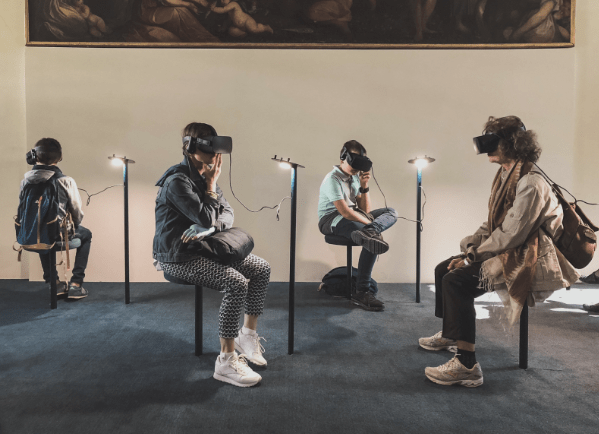
Educational technology has come a long way in recent years. With the rise of virtual reality (VR) and augmented reality (AR), educators now have more immersive and interactive ways to engage students. These emerging technologies are creating new possibilities for experiential learning that weren’t possible before.
What is Virtual Reality, and How Does it Work?
VR refers to computer-generated 3D environments you can explore and interact with using a headset and controller. VR headsets like the Oculus Rift and HTC Vive completely immerse you in a digital world by blocking out your actual surroundings. When you put on a VR headset, stereoscopic displays give you a 3D view, and head tracking allows you to look around the virtual environment in all directions just by moving your head. This creates an incredibly realistic sense that you have been transported to a new space.
Advanced virtual reality systems use a combination of technologies to achieve this immersive effect:
- Stereoscopic displays show slightly different images to each eye to mimic depth perception.
- Motion tracking sensors in the headset detect when you turn your head and update the visuals accordingly with no lag or stuttering.
- Controllers with 6 degrees of freedom follow your hand movements in 3D space to interact with virtual objects using natural motion.
- Spatial audio adjusts sound effects and acoustics based on your position and head orientation, making auditory experiences directional and localized.
These technologies combine to trick your brain into feeling fully present inside the computer-generated VR world. This cohesive virtual experience creates a deep sense of immersion that traditional screens cannot match.
How Does Augmented Reality Enhance Learning?
While VR surrounds you in a digital landscape, AR overlays computer-generated information and objects onto the real world. AR utilizes your smartphone camera or an AR headset to capture video of your surroundings. The AR software then analyzes the video feed and augments your view with interactive 3D graphics, audio, and other virtual enhancements.
For example, an AR app for astronomy could identify constellations in the night sky and overlay labels, models of the stars, and supplemental details right before your eyes. A medical AR app might let you view virtual overlays of MRI scans projected onto a dummy for enhanced study. AR provides a view of the real environment augmented with contextual digital information.
Unlike VR, AR does not fully replace reality. It simply enhances and expands upon the real environment. AR apps utilize spatial mapping, motion tracking, environmental understanding, and object recognition to integrate virtual objects and information. As you move around an AR space, the graphics stay fixed to their associated real-world coordinates or objects. This allows 2D textbooks and flashcards to come alive with dynamic 3D models springing up off the page.
Benefits of VR and AR for Next-Generation Learning
Boosts Engagement and Motivation Through Immersive Experiences
Research overwhelmingly shows that students have greater motivation to learn when lessons are interactive, hands-on, and relevant to their lives. Both VR and AR create highly immersive learning environments that demand attention and active participation. Instead of passive lecturing, students can go on realistic VR field trips, manipulate 3D models with their own hands, and interact with augmented information overlaying their physical study materials.
This potent combination of visual, auditory, and kinetic learning drives home key concepts through multisensory experiences. Fantasy VR worlds make learning exciting, while AR integrates digital enhancements seamlessly into everyday education. Both mediums provide the interactive stimulation and engagement modern students crave.
Improves Retention of Abstract Concepts Through Visualization
VR and AR technologies are especially beneficial for helping students grasp complex or abstract ideas that are difficult to explain through words or 2D images alone. Interactive 3D visualizations allow students to actively explore hard-to-picture concepts from every angle while receiving real-time feedback.
For example, an AR app can show dynamic chemical reactions taking place at the atomic level right on the pages of a chemistry book. Or, students could study geologic forces by manipulating a 3D VR simulation of plate tectonics. Making the invisible visible in an immersive environment fundamentally aids comprehension and retention of abstract topics.
Enables Safe Experimentation and Skill Practice
VR provides a sheltered environment for students to gain hands-on experience without real-world repercussions. Medical and trades students get to safely practice high-stakes professional skills on virtual patients and machinery simulations. VR surgical simulations can provide detailed anatomy exploration and let students perform procedures from start to finish to build knowledge. Firefighter trainees can learn fire response strategies by battling customized virtual blazes.
These experiential learning opportunities develop vital tactile proficiency and muscle memory. Students also benefit from the chance to fail and retry skills repeatedly as needed to hone competency. AR assistive instructions layered onto live experiences likewise guide successful skill development. Both technologies expand the possibilities for active experimentation.
Expanding Accessibility and Inclusion with VR and AR
For students with disabilities, VR and AR provide invaluable opportunities to participate in learning experiences they may not be able to access otherwise. Those with limited mobility can actively explore virtual environments and interact with simulated objects. Visually impaired students can leverage 3D spatial audio and tactile feedback to visualize spaces. Educators can also create fully customized VR lessons tailored to students’ individual sensory and information-processing needs.
And importantly, VR apps allow students to virtually inhabit other perspectives and environments. Immersive experiences build empathy and self-awareness by transporting students into someone else’s virtual shoes. Students can practice social interactions and gain exposure to diverse cultures through replicated scenarios. Such perspective-taking can greatly benefit neurodiverse learners and individuals on the autism spectrum. Overall, VR and AR enable more inclusive, adaptive educational experiences.
The Future of Immersive Educational Technology
VR and AR technologies are still just scratching the surface of what will be possible for immersive education. As hardware improves and expands, ever more realistic simulated environments and seamless augmented overlays will transform how students learn, and teachers instruct.
Future classrooms may ditch monitors and adopt lightweight AR glasses or VR contact lenses. Untethered mobile headsets could enable multi-user collaborative VR learning spaces. Realistic VR recreations of historical moments, foreign landscapes, or scientific phenomena may become standard educational aids.
Companies like Draw & Code are pioneering creative applications that merge programming, art, and immersive technology. Their interactive AR tools help students learn coding concepts through hands-on game creation directly linked to their hand-drawn characters and worlds. As immersive education continues to evolve, students have an exciting future of hybrid learning enhanced by virtual and augmented experiences that make education multi-dimensional.



